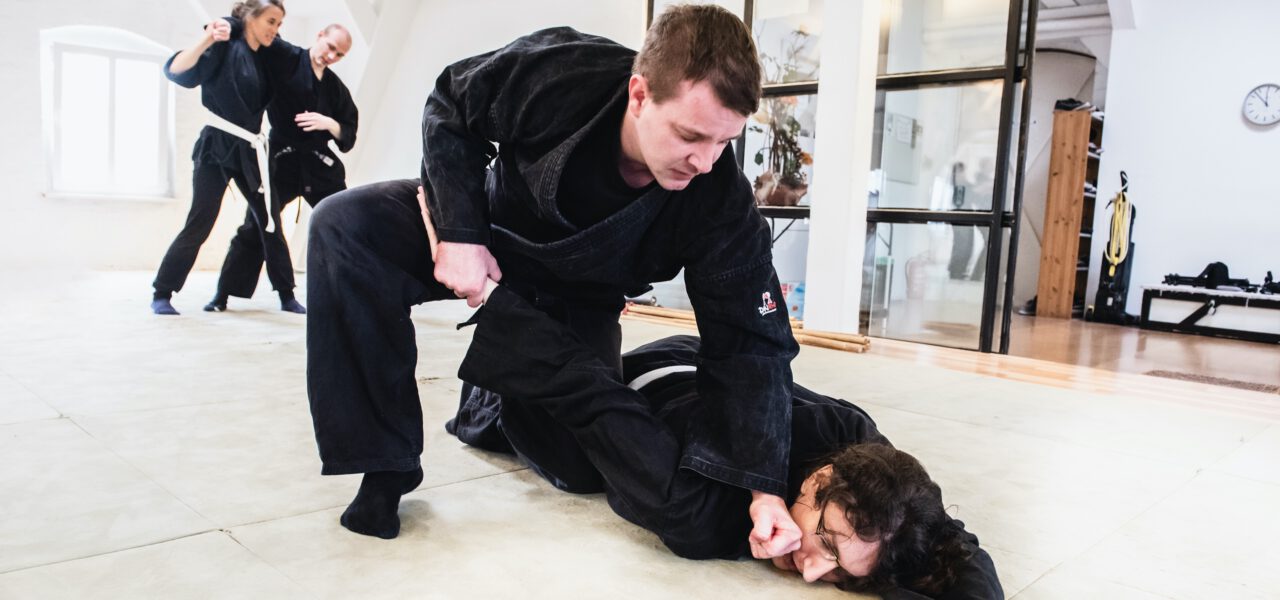Ninjutsu is a martial art that was developed in mediaeval Japan, during a period of violent conflicts. During this time, defeated warriors often had to fear for their lives. Some fled to far-away regions in the hope of leading an easier life. But even there, they were often still pursued mercilessly by victorious troops. In their struggle for survival against a stronger opponent, they had no choice but to develop completely new survival strategies. They studied and perfected the teachings of the Chinese general and philosopher, Sunzi, and developed a great many strategies and innovative techniques that were based on using their situation to their advantage. These strategies remain valid today and reveal themselves anew through our practical training methods.
Ninjutsu involves hard and soft, armed and unarmed, as well as traditional and modern techniques; it offers a practically never-ending repertoire of possible actions. Due to its distinct history of origin, our method is specifically not based on defeating or eliminating an aggressor. The main priority is staying safe and ensuring survival, as well as protecting others in a similar manner. These goals can often be best achieved through endurance, escape, or by diffusing the situation. The methods necessary to accomplish this were not – as is often the case – put together at one person’s discretion, but borne out of necessity and developed, tested, perfected, and passed on over hundreds of years by countless users. Current grandmaster of altogether nine styles, which today are colloquially summarised by the term Ninjutsu, is the 1931 born Japanese Masaaki Hatsumi.
Conventional martial arts and self-defense concepts are based almost solely on sporting competitions or on worst-case scenarios in a ostensibly legal vacuum. The reality is that we are confronted by aggressors in a multitude of situations; this person is frequently not a stranger. Often it can be an acquaintance, a colleague or a customer. Traditional concepts in such situations can quickly turn against the user; their limited options can cause them to go far beyond what is necessary, which can even result in criminal prosecution. In reality, such situations can only be mastered when physical ability, rhetorical skill and psychological sensitivity work together perfectly. For this reason, people who routinely have to deal with aggression and confrontation, be it at work or in private, appreciate our method.
The results of training regularly extend well into the trainee’s every-day life: in addition to greater personal safety in threatening situations, they experience more relaxed interactions with strangers, acquaintances, and friends, as well as positive feelings towards their own body and increased confidence. They experience their body as powerful, lively and capable of action. They find it easier to say “no” and to set healthy limits with regard to others. Furthermore, they improve their powers of observation, their judgment and their trust in their own intuition. Thanks to our method’s great efficiency, these skills work like an emergency parachute: equipped with these options, users’ charisma and perceptions change, and ideally, they will not need to use their skills. This is the main teaching of the Chinese general and philosopher, Sunzi, which states that the purest form of martial arts is the ability to end a conflict without using those very skills.
